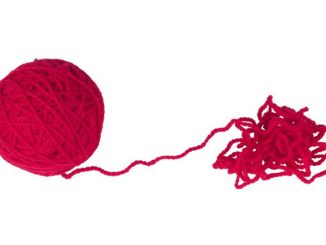
My students are celebrating their First Reconciliation in February, and I have been trying to find engaging ways to introduce my students to Scripture stories that will help them to understand the sacrament (such as playing the Game of the Good Shepherd). I am hoping that they will come to a deeper understanding of the sacrament by experiencing the Parable of the Lost Sheep through the eyes of the different characters in the story.
After reading the parable once, I will ask my students to make a list of the characters Jesus presented in the story. Their list should include the sheep who got lost, the 99 sheep who were left behind, the shepherd, and the shepherd’s friends and neighbors. I will then divide the class into four groups and assign each group a character (or characters) from the story. I will ask each group to imagine the feelings of the character they were assigned and then retell the story from that character’s perspective. Children may need help getting started, so I will give them some examples that can help them:
- The Lost Sheep: I chose not to follow directions and wandered off by myself. Now I am lost and can’t find my way back home. I hope someone finds me soon!
- The Shepherd: I cannot find one of my sheep, so I am choosing to go on a search mission to find him. I am very scared that the sheep is lost and by himself. I want him to be back with the rest of his family.
- The 99 Sheep: We chose to follow the shepherd’s directions, but we were still left behind when he went off to look for our lost friend. We are upset our friend did not make a loving choice, but we still hope that he is okay.
- The Friends and Neighbors of the Shepherd: We are celebrating with our friend, the shepherd, now that he has found his lost sheep! We are so excited that the sheep was found. We are planning a party to show how happy we are.
Once students have shared the parable from their perspective, I will ask the class which character they think they would have been. Did the story of one character resonate more than others? Finally, I will help students connect the characters’ feelings in the story to their own feelings as they approach the Sacrament of Penance and Reconciliation.
An important point I will want to make is that no character in the story operates in isolation. Each character’s actions affect every other character in the parable. Even though only one character made an unloving choice, all the other characters felt the consequences of the choice. The same is true for us. Hopefully students will realize that their unloving choices affect others. The Sacrament of Penance and Reconciliation is a gift that allows us to be reconciled to those who are hurt by our choices—our friends, family, neighbors, and God. We are all like the lost sheep, and we will be thrilled when the Good Shepherd finds us and celebrates our return to the flock.




thank you so much, your resources are always so helpful. I will need this to help me do the chapter on Reconciliation for my CCD class!
Thank you, Doreen! I really appreciate your kind comment! I’m praying with your students as you prepare for the Sacrament!
peace,
Shannon
Thanks so much for your resources are always so helpful in such a way that it improves my way and skills of preparing the lessons to my students.
God bless you as you continue to impact in me more knowledge
Thank you very much for your resources so helpful in deepening one’s faith in our school culture. Good bless Ms. Shannon for allowing us to share your expertise.
Thanks for the revelation about the lost sheep and how other characters are affected. God bless you
Thank you for this wonderful lesson! One of our awesome fourth grade catechists found your lesson when searching for activities to supplement her Reconciliation lesson. She said the class had a lively discussion and the fourth graders loved the activity! She shared it with another fourth grade teacher and after her class completed the activity, they presented their findings to our second graders, preparing for Reconciliation. It was a huge hit and provided an opportunity for our fourth graders to share their experiences of going to Confession and answer questions from some nervous second graders. What a blessing for all!!! Thank you and God bless you!